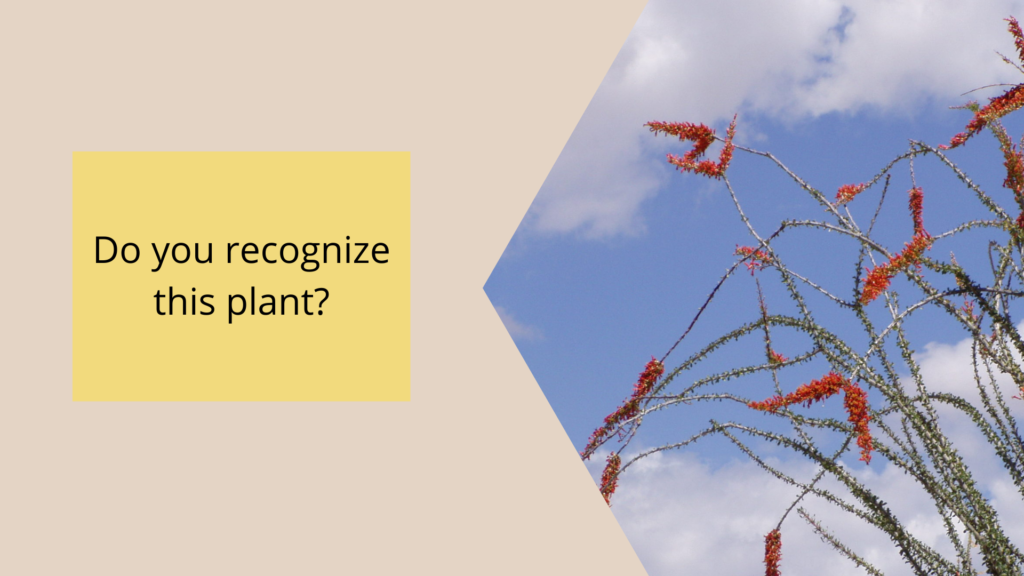
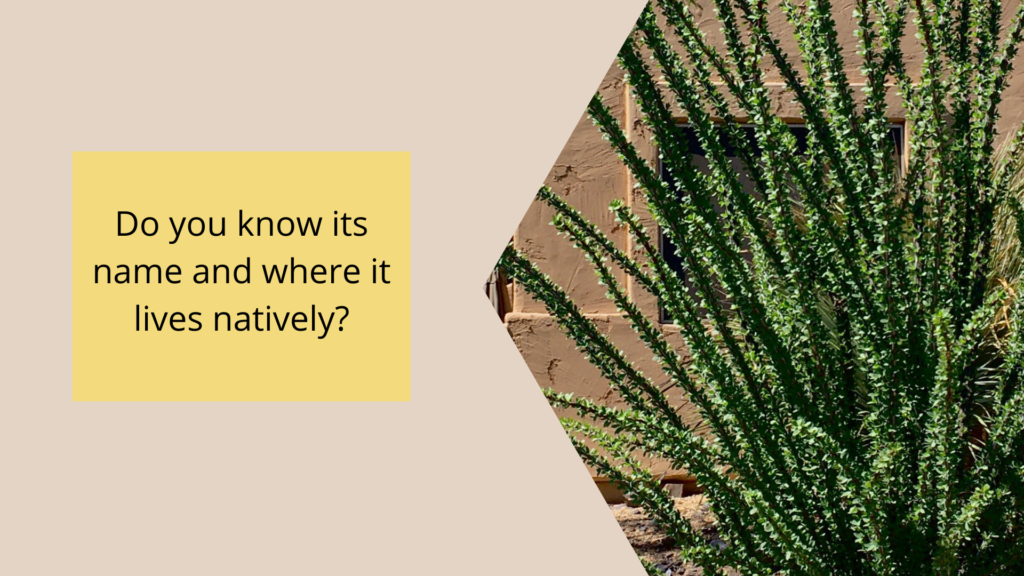
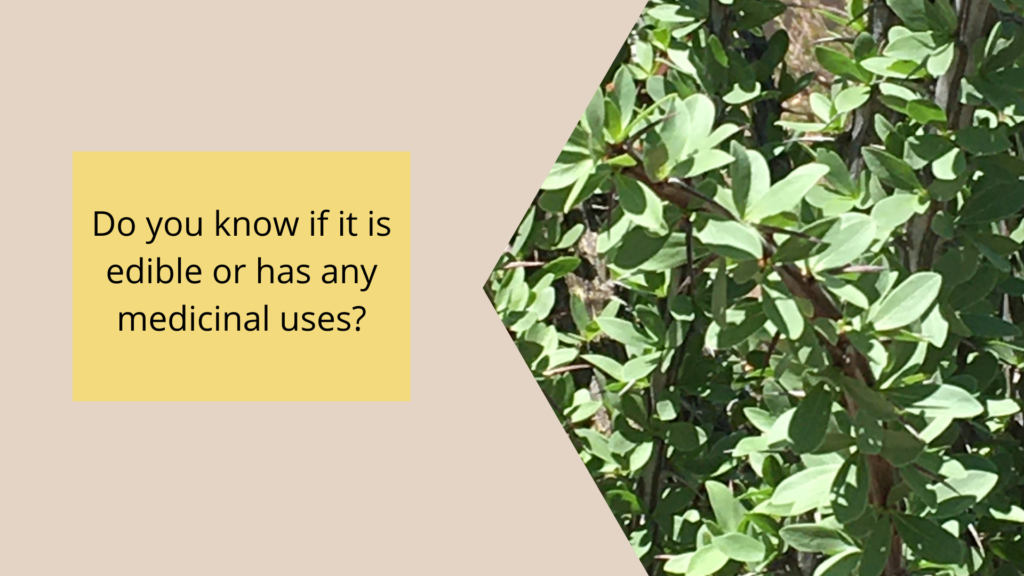
When I first moved to Arizona, a new friend of mine cautioned, “See that dead-looking bunch of sticks over there. Don’t pull them up and throw them away. They aren’t dead. They are Ocotillo.”
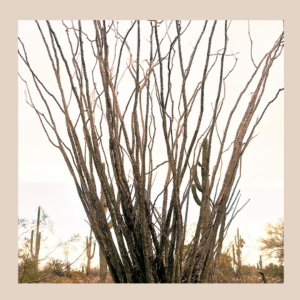
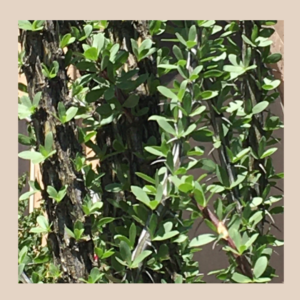
Ocotillo (pronounced Oh-Kuh-Tee-Yo) is an amazingly interesting desert plant. Much of the year, they look like upright, thorny firewood, and then, after a substantial rainstorm, they grow small round approximately 2” leaves all along their stalks – suddenly very much alive. If there is no continuation of moisture, then in a week or two, the leaves will be gone and the stalks look dead again, but inside, the Ocotillo has stored enough chlorophyll to photosynthesize until the next rain. It usually does its “instant live plant” trick four or five times a year when there is normal rainfall.
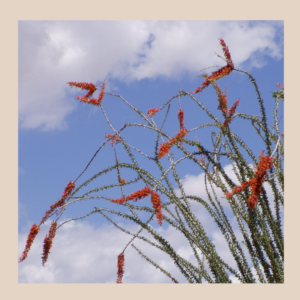
The Ocotillo is native to the Sonoran and Chihuahua Deserts. The name Ocotillo in Spanish means “little torch” which describes the blossoms which decorate the tips of the stalks from sometime in mid-February to mid-May. The plant only has leaves when there is enough moisture in the ground, but it always blooms in the spring, even without leaves. It also has a lot of aliases, being called Flaming Sword, Jacob’s Staff, Desert Coral, Vine Cactus, Candlewood and Coachwhip – all based on its unusual appearance.
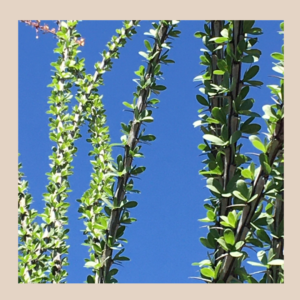
The Ocotillo is not a cactus although it is a semi-succulent. It belongs to the botanical family Fouquieria (full name: Fouquieria Splendens) and has more in common with blueberries and tea plants than cacti. Ocotillo grows further north than any of its other relatives and is most closely related to the Boojum Tree which is common in Baja.
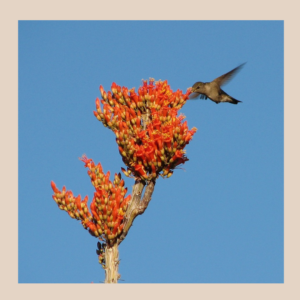
The BFF of the Ocotillo is the hummingbird and vice-versa. Its flowers bloom at a time of the year when other sources of hummingbird food can be very scarce (remember the Ocotillo always blooms) and the tube-like shapes of the flowers are a perfect design for the hummers to get to the nectar. Hummingbirds, on the other hand, pollinate the Ocotillo so it can bloom next year. It’s a win-win. Besides hummingbirds, bees also feast on the nectar and act as pollinators. When the Ocotillos have leaves, they are appetizing to white tailed deer and bighorn sheep.
The blossoms of the Ocotillo are edible by humans and supposedly have a slightly sweet taste. They can also be soaked overnight and made into juice or tea.
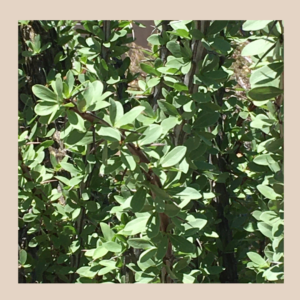
Native peoples used the flowers and roots to slow bleeding from open wounds. Tinctures or extracts have been used to alleviate coughing, achy limbs, varicose veins, urinary tract infections, and benign prostate growths. Extracts from the bark have also been used to treat PMS and accompanying abdominal pain, mood swings and headaches.
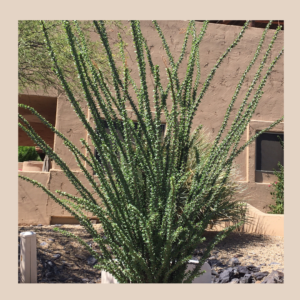
When you visit the desert and see a group of dead thorny sticks growing vertically which look as though they should be cut down and thrown away, know that this plant is very much alive and will prove it the next time it rains. You especially don’t want to get rid of it or even harvest the blossoms without permission because the Ocotillo is protected on private, state and federal land under the Arizona Native Plant Law.
